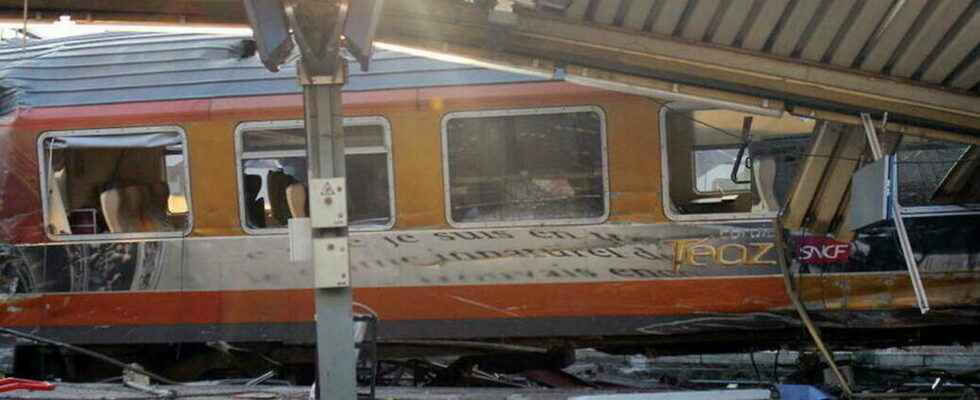La SNCF sentenced by the Évry court and released for SNCF Réseau and a former railway worker, nine years after the derailment of a train at Brétigny-sur-Orge station (Essonne), which had killed seven people and caused hundreds of psychological and/or physical injuries. The president of the court announced to condemn the SNCF to a fine of 300,000 euros, heavier than the 225,000 incurred, because of the state of legal recidivism of the company in matters of manslaughter.
The eight-week trial, held last spring, “was an ordeal for the victims”, Ms.e Alexandre Varault. On Wednesday, the more than 200 registered civil parties hope “a deliverance”, insisted the lawyer, who defends about fifteen. “It is a fateful but long-awaited date”, added Thierry Gomes, president of the association Mutual aid and defense of the victims of the Brétigny disaster (EDVCB). In his eyes, the debates before the criminal court of Évry made it possible to “highlight” the “failures of the defendants”, having led, according to him, to the death of his parents.
READ ALSOAt the SNCF, solar power is going well
On Friday July 12, 2013, at 5:10 p.m., a steel fishplate, a sort of large staple joining two rails, came apart, causing the derailment of the Intercités Paris-Limoges train. A seven-year investigation ensued to investigate the causes of the crash, ultimately culminating in a trial for manslaughter and manslaughter.
For eight weeks, from April 25 to June 17, the court tried to clarify the possible responsibilities of the SNCF (prosecuted as criminal heiress of SNCF Infra, responsible for maintenance at the time of the accident), of SNCF Réseau (ex -Réseau Ferré de France, track manager) and a former railway worker, Laurent Waton, a young local director who had carried out the last monitoring round. Five weeks were devoted to technical discussions.
The court also heard at length the broken testimonies of many civil parties. Like that of Stephen C., who described in tears “the endless search” for his little brother Vincent, broke on the station platform. There followed “the most trying years of [sa] life”, to having to put aside his mourning to “manage” his collapsed parents, before he himself “cracks down”.
READ ALSOGuillaume Pepy, the railway worker who drives for Lagardère
Maximum penalty requested for the SNCF
At the end of the debates, the prosecutor Rodolphe Juy-Birmann asked to condemn the SNCF, in charge of maintenance, to the maximum fine penalty. With this disaster, in the Paris suburbs, “it’s a whole conception of public service that has collapsed”, lamented the prosecutor, castigating “a company in denial”, which does not assume to have “trivialized the ’emergency’ to the detriment of user safety.
Blaming him for a “failing attitude”, the public prosecutor accuses him of “having sloppy and not wanting to spend time on maintenance operations”. For the prosecutor, the SNCF should, for example, have anticipated a change in the track apparatus in question, reduce the maximum speed of movement of the trains… Retaining twelve faults, the prosecution requested a fine of 450,000 euros from its against.
On the other hand, the prosecution requested the release for the former railway executive and for the manager SNCF Réseau (ex-RFF), considering that the faults with which they are accused were not characterized. The three defendants asked for their release, several times addressing their thoughts to the victims.
In his pleading, the SNCF lawyer, Emmanuel Marsigny, denounced “the excess” of an indictment unable to demonstrate “a precise scenario” of the accident. The SNCF defended itself by dissecting the causes of the pivoting of the splint at the origin of the disaster, arguing that the disassembly had been sudden, caused by a defect in the steel… and therefore unpredictable. On the contrary, the prosecution sees it as a slow process of degradation and accuses the SNCF of having “created the context at the origin of the accident”.
